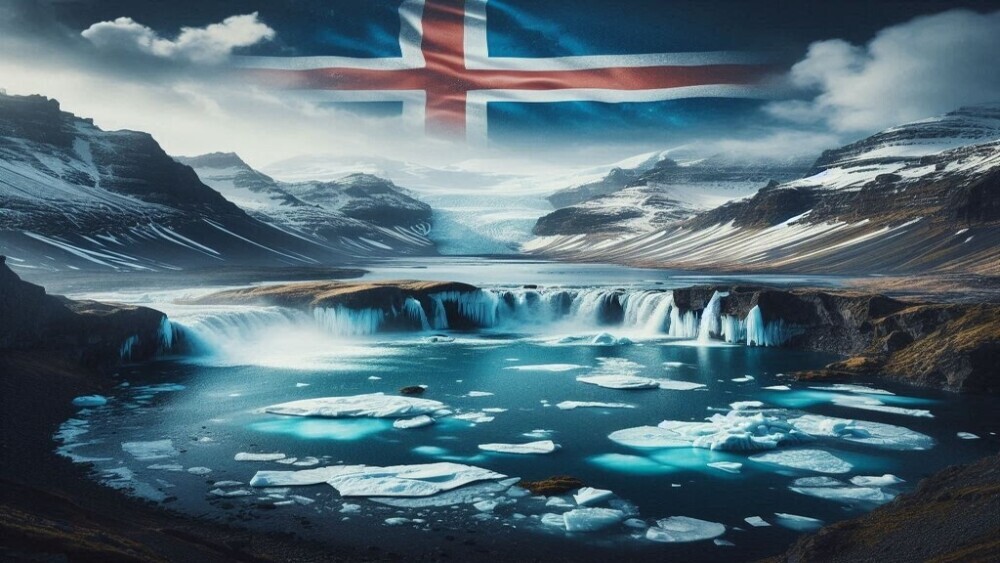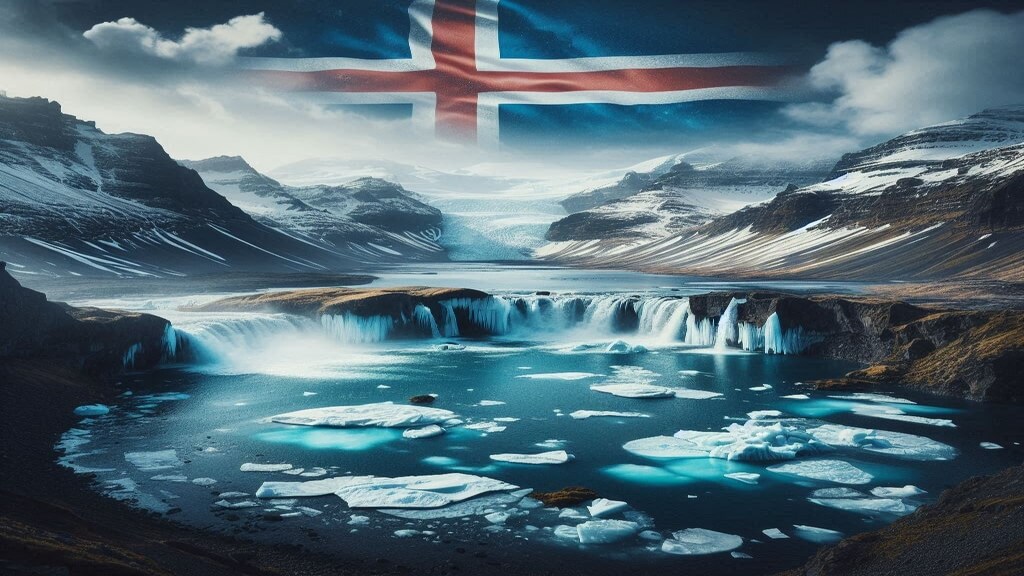
Iceland, often referred to as the “Land of Fire and Ice,” is a country of striking contrasts. With its stunning glaciers, active volcanoes, geothermal hot springs, and waterfalls, Iceland is a destination that feels almost otherworldly. From the vibrant capital city of Reykjavík to the dramatic landscapes of the highlands, there is something in Iceland for every type of traveler. Whether you’re drawn to its natural wonders or its unique culture, here are ten must-visit places in Iceland.
1) Reykjavík: The Capital of Iceland

(Photo by Einar H. Reynis on Unsplash)
Reykjavík, the northernmost capital city in the world, is a vibrant hub of culture, history, and nightlife. Despite its small size, the city is known for its lively art scene, modern architecture, and friendly locals. One of the most iconic landmarks in Reykjavík is the Hallgrímskirkja Church, a striking modernist church that dominates the city’s skyline. You can take the elevator to the top of the tower for panoramic views of Reykjavík and the surrounding mountains.
For art lovers, the Harpa Concert Hall, with its glass facade inspired by the basalt landscapes of Iceland, is both a cultural center and an architectural masterpiece. The National Museum of Iceland and the Reykjavík Art Museum offer fascinating insights into Iceland’s history and artistic heritage.
Don’t miss the vibrant Laugavegur street, known for its eclectic mix of shops, cafes, and bars. Reykjavík is also a great base for day trips to nearby natural wonders.
Must-Do Activities:
- Visit Hallgrímskirkja Church for a breathtaking view of the city.
- Explore the modern architecture of the Harpa Concert Hall.
- Wander through Laugavegur Street and discover Reykjavík’s vibrant local culture.
2) The Golden Circle: A Tour of Natural Wonders

(Photo by Kym Ellis on Unsplash)
The Golden Circle is one of Iceland’s most popular tourist routes, offering a combination of stunning natural landmarks and historical sites. The three main stops along the Golden Circle are Þingvellir National Park, the Geysir Geothermal Area, and Gullfoss Waterfall.
Þingvellir National Park, a UNESCO World Heritage site, is the birthplace of Iceland’s parliament (Alþingi), founded in 930 AD. The park sits in a rift valley where the Eurasian and North American tectonic plates meet, making it a geologically fascinating area. Visitors can walk between the tectonic plates and admire the park’s rugged beauty, including the Silfra Fissure, a popular diving and snorkeling spot known for its crystal-clear waters.
The Geysir Geothermal Area is home to Strokkur, a geyser that erupts every 5–10 minutes, shooting boiling water up to 30 meters in the air. The area is dotted with hot springs, mud pools, and other geothermal features.
Finally, Gullfoss Waterfall, often referred to as the “Golden Falls,” is one of Iceland’s most spectacular waterfalls, with two tiers plunging into a deep canyon.
Must-Do Activities:
- Walk between the tectonic plates at Þingvellir National Park.
- Witness the power of Strokkur Geyser erupting at the Geysir Geothermal Area.
- Marvel at the cascading waters of Gullfoss Waterfall.
3) Blue Lagoon: Iceland’s Famous Hot Spring

(Photo by Peter Stewart on Pexels)
The Blue Lagoon is one of Iceland’s most iconic attractions, a geothermal spa known for its milky-blue waters set against a backdrop of black lava fields. The lagoon’s water is rich in silica and other minerals, which are believed to have healing properties, making it a popular destination for both relaxation and rejuvenation.
Located on the Reykjanes Peninsula, just a short drive from Reykjavík, the Blue Lagoon is a must-visit spot for travelers. It is especially magical during the winter months when you can soak in the warm waters while watching the Northern Lights dance in the sky above.
The Lava Restaurant at the Blue Lagoon offers gourmet dining with views of the surrounding lava fields, adding a touch of luxury to your visit.
Must-Do Activities:
- Relax in the soothing geothermal waters of the Blue Lagoon.
- Pamper yourself with a silica mud mask or a spa treatment.
- Enjoy a meal at the Lava Restaurant with views of the lava fields.
4) Jökulsárlón Glacier Lagoon: A Diamond Ice Wonderland

(Photo by Vincent Croos on Unsplash)
Located in southeast Iceland, Jökulsárlón Glacier Lagoon is one of the most breathtaking places in the country. The lagoon is filled with icebergs that have broken off from the nearby Breiðamerkurjökull Glacier, creating a surreal and ever-changing landscape of floating ice sculptures.
The lagoon is connected to the Atlantic Ocean by a short river, and the icebergs, which glow in shades of blue and white, slowly drift towards the sea. Nearby, Diamond Beach is another stunning location where chunks of ice wash ashore, glittering like diamonds against the black volcanic sand.
Visitors can take a boat tour on the lagoon to get up close to the icebergs and seals that often swim in the cold waters. This area is particularly photogenic, especially during sunrise or sunset when the light creates a magical atmosphere.
Must-Do Activities:
- Take a boat tour on the Jökulsárlón Glacier Lagoon to explore the icebergs.
- Visit Diamond Beach and marvel at the ice formations scattered across the black sand.
- Capture stunning photos of the glacier lagoon at sunrise or sunset.
5) Vatnajökull National Park: Ice Caves and Glaciers

(Photo by Davide Cantelli on Unsplash)
Vatnajökull National Park is the largest national park in Europe, covering about 14% of Iceland. It’s home to Vatnajökull Glacier, the largest ice cap in Iceland, and some of the country’s most impressive natural landmarks, including ice caves, towering glaciers, and volcanic peaks.
During the winter months, visitors can explore the stunning ice caves that form within the glacier, where the walls of ice glow with shades of blue and turquoise. Guided tours are available, offering a safe way to experience these natural wonders.
The park also includes the Skaftafell area, which is known for its beautiful hiking trails, including the path to Svartifoss, a waterfall framed by black basalt columns. The park is a paradise for nature lovers and adventure seekers, offering glacier hikes, ice climbing, and scenic drives.
Must-Do Activities:
- Explore the incredible ice caves in Vatnajökull Glacier.
- Hike to the striking Svartifoss Waterfall, surrounded by basalt columns.
- Take a glacier hike or an ice climbing tour for a true Arctic adventure.
6) The South Coast: Waterfalls and Black Sand Beaches

(Photo by Balazs Busznyak on Unsplash)
Iceland’s South Coast is a stunning region filled with waterfalls, dramatic cliffs, and unique black sand beaches. Some of the country’s most famous waterfalls can be found here, including Seljalandsfoss and Skógafoss.
Seljalandsfoss is unique in that visitors can walk behind the waterfall, providing a different perspective and the perfect opportunity for photos. Skógafoss, another majestic waterfall, drops from a height of 60 meters and is often accompanied by rainbows on sunny days.
Further along the coast, the Reynisfjara Black Sand Beach is famous for its jet-black volcanic sand and the towering basalt columns of Reynisdrangar, which rise out of the sea. The nearby village of Vík is a great place to stop for food and accommodation while exploring the South Coast.
Must-Do Activities:
- Walk behind the cascading waters of Seljalandsfoss.
- Stand in awe of the powerful Skógafoss Waterfall.
- Explore the unique Reynisfjara Black Sand Beach and the Reynisdrangar sea stacks.
7) Lake Mývatn: Geothermal Wonders of the North

(Photo by Miles Rothoerl on Pexels)
Lake Mývatn, located in northern Iceland, is a volcanic lake surrounded by a range of geothermal features and unique natural formations. The lake itself is known for its birdlife, particularly in summer when thousands of ducks and other migratory birds gather in the area.
Nearby, the Mývatn Nature Baths are a more serene alternative to the Blue Lagoon, offering geothermal bathing in mineral-rich waters with views of the surrounding mountains.
Not far from Mývatn is the Hverir Geothermal Area, where visitors can see boiling mud pools, fumaroles, and vibrant mineral deposits that make the landscape appear almost Martian. Dimmuborgir, a field of lava rock formations and caves, is another nearby attraction that looks like a surreal fantasy landscape.
Must-Do Activities:
- Soak in the relaxing waters of the Mývatn Nature Baths.
- Visit the Hverir Geothermal Area and witness the bubbling mud pools and steam vents.
- Explore the lava formations of Dimmuborgir, a mysterious and otherworldly area.
8) Akureyri: The Capital of the North

(Photo by Michelle Raponi on Pixabay)
Akureyri, often referred to as the “Capital of the North,” is Iceland’s second-largest city and a vibrant cultural hub. Nestled at the base of Eyjafjörður Fjord, Akureyri offers a charming mix of urban life and natural beauty.
The city’s main landmarks include the Akureyri Church, designed by Guðjón Samúelsson, the same architect behind Hallgrímskirkja in Reykjavík. Akureyri is also home to one of the northernmost botanical gardens in the world, featuring a wide variety of Arctic flora.
Akureyri is the perfect base for exploring northern Iceland, including whale watching tours in Eyjafjörður and visits to nearby Goðafoss Waterfall, one of the most beautiful waterfalls in the region.
Must-Do Activities:
- Visit the impressive Akureyri Church and the Botanical Gardens.
- Go on a whale-watching tour in Eyjafjörður Fjord.
- Take a trip to Goðafoss Waterfall, known as the “Waterfall of the Gods.“
9) Landmannalaugar: The Highlands of Iceland

(Photo by Jon Flobrant on Unsplash)
For those looking to explore Iceland’s rugged highlands, Landmannalaugar is a must-visit destination. Located in the Fjallabak Nature Reserve, this remote area is famous for its colorful rhyolite mountains, geothermal hot springs, and hiking trails.
One of the most popular hikes in the region is the Laugavegur Trail, which takes hikers through a landscape of steaming hot springs, lava fields, and multicolored mountains. The area is especially beautiful in the summer months, but visitors can also experience the highlands on guided super jeep tours in the winter.
Landmannalaugar’s natural hot springs are a welcome treat after a day of hiking, and the campsite here offers a unique opportunity to experience the wilderness of Iceland’s highlands.
Must-Do Activities:
- Hike the famous Laugavegur Trail through Iceland’s colorful highlands.
- Take a dip in the natural hot springs of Landmannalaugar.
- Experience the highlands on a super jeep tour during the winter months.
10) Westfjords: Iceland’s Untouched Wilderness

(Photo by Francesco Ungaro on Pexels)
The Westfjords is one of Iceland’s most remote and least-visited regions, offering dramatic fjords, towering cliffs, and a sense of untouched wilderness. This area is perfect for travelers looking to escape the more tourist-heavy parts of the country and explore Iceland’s raw, unspoiled beauty.
One of the highlights of the Westfjords is Dynjandi Waterfall, often considered one of the most beautiful waterfalls in Iceland. Dynjandi cascades down a series of rock formations, creating a breathtaking sight.
The Westfjords are also home to the Hornstrandir Nature Reserve, one of the most isolated places in Iceland, where visitors can hike among rugged cliffs and spot Arctic foxes in their natural habitat. The region’s small fishing villages, like Ísafjörður, offer a glimpse into traditional Icelandic life.
Must-Do Activities:
- Marvel at the majestic Dynjandi Waterfall as it tumbles down the mountainside.
- Hike through the remote Hornstrandir Nature Reserve and encounter Iceland’s wildlife.
- Visit the charming village of Ísafjörður and explore the local culture.
Conclusion: A Journey Through Iceland’s Natural Wonders
From the vibrant streets of Reykjavík to the remote wilderness of the Westfjords, Iceland is a country that offers unparalleled natural beauty and unique cultural experiences. Whether you’re soaking in geothermal hot springs, hiking through colorful mountains, or exploring glaciers and volcanoes, Iceland promises a sense of wonder at every turn.
Unique Fact About Iceland
The Icelandic language has remained largely unchanged for 1,000 years: Modern Icelanders can still read ancient texts like the Viking sagas with little difficulty.
“In Iceland, the land speaks in volcanic murmurs and the sky in Northern Lights, painting a world that’s both wild and serene.“

